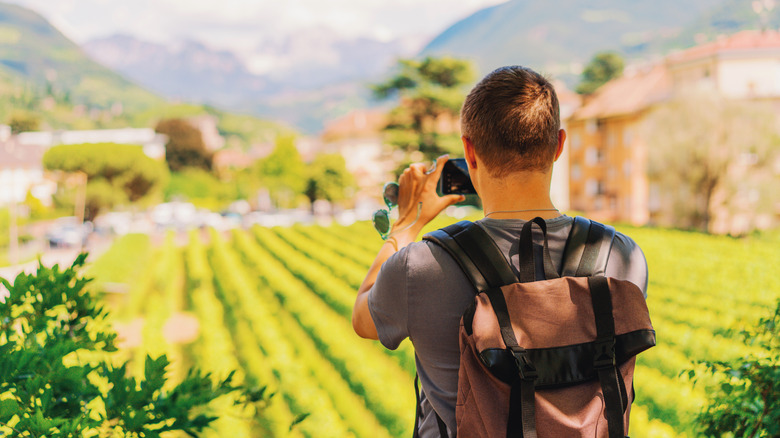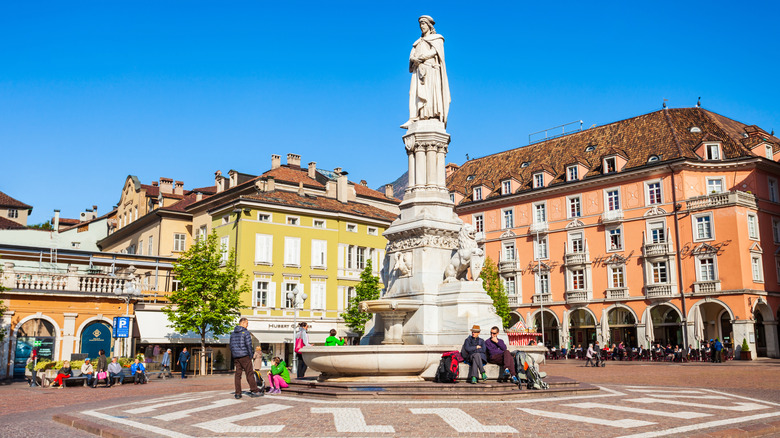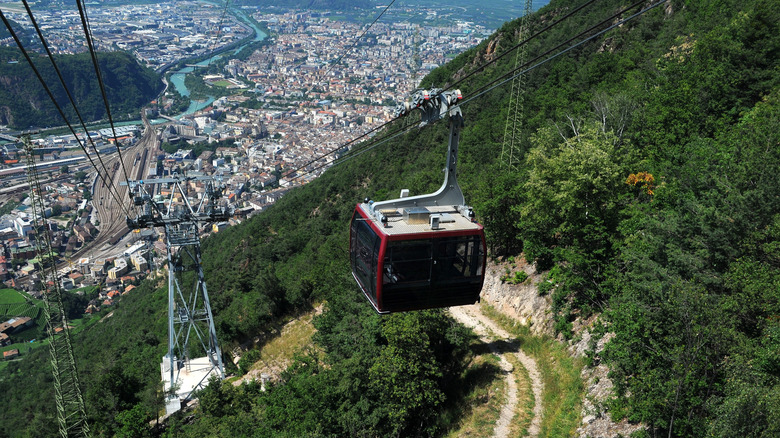Traveling to Bolzano is almost like hitting two birds with one stone. This city, located in Italy’s South Tyrol province, embraces two cultures — a practice that traces back to its rule under Austria and Hungary until it was annexed by Italy in 1919. Because of this, Italian and Austrian influences are seamlessly woven into the fabric of Bolzano’s culture, history, and everyday life. Located in a valley framed by the magnificent Dolomites, Bolzano is succinctly summed up by travel expert Rick Steves on his blog, Rick Steves’ Europe, as a place where “Austria meets Italy.”
Wander around town and you’ll hear people speaking a blend of Italian and German, as well as a smattering of Ladin, a minority language rooting back to the early centuries A.D. that is recognized as South Tyrol’s third official language. Signage around town are written in the two primary languages, while restaurant menus will advertise Italian dishes like bruschetta next to a hearty German sauerkraut and würstel sausage. Even the city’s climate — sun-drenched summers and cold winters — alternates between Mediterranean warmth and a chilly Alpine temperatures. Reflecting on the city’s duality, Steves writes, “Blending Austrian tidiness with an Italian love of life, Bolzano feels like a happy castaway between two worlds.”
Bolzano’s airport is a mere 15 minutes from the city center, which makes flying a quick and accessible option. However, with the train station located a stone’s throw away from Walther Square, taking the train from other major European cities can be much more convenient. Trenitalia, DB-ÖBB Italy, and Italo all serve Bolzano station from major cities like Rome, Florence, and Trento. Depending on where you’re coming from, a trip to Bolzano could make for one of those breathtaking European train rides.
What to see in Bolzano, Italy
When in Bolzano, you’ll inevitably end up visiting Piazza Walther Platz, the square that is often called the “drawing room” of the town. The square has a long history and first held the name of its patron King Massimiliano di Baviera before it was renamed at the start of the 20th century after the 12th-century poet and storyteller Walther von Der Vogelweide, whose neo-Romanesque statue stands at its center. After exploring the square, take a stroll along Via Bottai to marvel at the ironwork signs that dot the street. If you are craving a snack head over to Bolzano’s street market on Piazza delle Erbe, Obstmarkt. A feast for the eyes and the palate, this food market, where food vendors were obliged by a 1437-written law to sell their wares, still operates here for most of the week. It also hosts a Italian Christmas market you wouldn’t want to miss.
Steves also recommends several sites on his blog for a dose of local history and culture. The first is the South Tyrol Museum of Archaeology to pay a visit to Ötzi, the Bronze-age hunter whose frozen corpse was unearthed by accident in 1991. This is a must-see if you are interested in human history as the 5,300-year-old body is still perfectly intact, preserved in the museum alongside his coat, his loincloth, and hunting gear. Steves also recommends a visit to Benito Mussolini’s 1928 Victory Monument, a structure heavily contested by Bolzano’s German-speaking community for its fascist-style Italian symbolism.
Getting around Bolzano is fairly easy. The pedestrian-friendly city center has a well-organized public transport system, and prepaid transport cards will cover any form of public transportation across South Tyrol for a chosen duration. You can also rent a bike or e-bike from the numerous bike-sharing stations scattered around the city.




